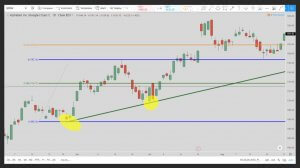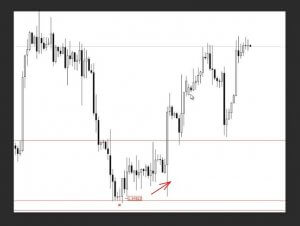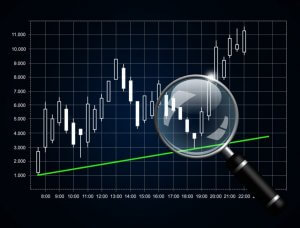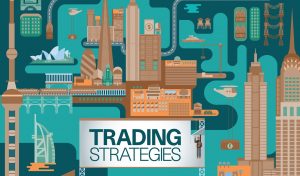Why do trends work? The momentum-or inertia of prices to move in the same previous direction beyond what we might expect from a random path-is the oldest, most intense, persistent, and ubiquitous investment factor of all the discoveries and analyses to date.
Why do trends work? It is the oldest, most intense, persistent, and ubiquitous investment factor of all discovered. However, empirical evidence alone does not guarantee that this or that anomaly will continue to manifest in the future. As we saw earlier here, in emerging phenomena produced by human actions such as economics and markets, empirical evidence is never enough and we need to know and understand why things happen. We then ask ourselves a few key questions:
- Why does this phenomenon occur in all markets and at all times?
- Why does this phenomenon occur in all markets and at all times?
- And most importantly when it is actually used to invest our money: will inertial prices continue to show in the future?
Understanding how and why price inertia is generated is essential because if the reasons behind it are inevitable, then inertia will also inevitably persist in the future and we can use it as a tool to invest. The good news is that there are at least three reasons for this inertia to occur, to last, and ultimately to be an inevitable phenomenon such as the existence of economic cycles:
Why Do Trends Work? Structural Reasons for the Collective Investment Industry
Most institutional investors responsible for funds or investment portfolios have to comply by law with pre-established market risk limits in their prospectuses. This forces them to reduce their exposure to those assets whose risk (usually measured by their volatility and/or VaR) is growing. I mean, to sell when volatility goes up. By complying with the legislation, their sales help the formation and continuity of bearish trends. On the contrary, a decrease in risk (a drop in volatility) leads them to buy more, in turn fueling the upward trends in assets that are rising in price.
But it is not only the regulatory control of risk that feeds trends. The professional managers, on a personal level, are prisoners of the benchmark that their funds try to overcome (without hardy success, as the works of Pablo Fernández and the SPIVA reports demonstrate), so they cannot “stay out” of the bullish movements. If you don’t buy the assets that are coming up and sell them when they go down (even if you don’t know why or disagree with the reasons for the move), you run the risk of walking away from your benchmark and getting fired. The fear of losing their jobs translates into feeding, to a greater or lesser degree according to their independence to the benchmark, bullish and bearish tendencies when they appear. As I have repeated on other occasions, the professional managers of large firms do not manage the money of their clients, but their professional survival.
The professional managers of large companies do not manage the money of their clients, but their professional survival. In addition, when a fund is surpassing its benchmark, it draws the attention of media and investors and attracts new subscriptions, which have to be invested in those assets in which the fund is already invested, further fueling previous upward trends. The same is true of those funds that are falling in the ranking behind the benchmark: they suffer refunds that force them to sell and thus feed the bearish tendencies.
In short, there are strong incentives for institutional actors to do what others do. That is, it is the very idiosyncrasy of the management industry (investment and pension funds, large insurers, etc.), coupled with the incentives of their own professionals, This obliges the major players who provide the bulk of the volume to the markets to align with the trends and to feed them inevitably. There are strong incentives for institutional actors to do what others do.
As we see, both legislation and the incentive structure in the industry should change radically so that this reason would lose influence on price formation and its inertia.
Why Do Trends Work? Macroeconomic Reasons
Regardless of the structural reasons for the industry we have just seen, the existence of economic cycles causes some assets to behave better or worse than others for long periods of time.
Each state of the cycle or combination of states-expansion, recession, inflation, and deflation-generates different underlying dynamics in the economy, causing some types of assets to revalue more than others in different periods. Depending on the time of the cycle in which the economy is polarized, there are therefore trends of several years usually called bullish or bearish markets (secular bull/bear markets). For example, during periods of economic expansion, which can last from one to twelve years (we have 10 years with the current one), the stock market as an asset is revalued more than the rest of the assets (as a manifestation derived from the economic boom itself), unlike during economic recessions. These secular trends are also unavoidable and exploited by some inertia strategies that focus on the long term of economic cycles.
In order for this phenomenon to cease to occur, economic cycles should die out, which is impossible due to the inevitable emergence and spread of imbalances throughout the economy, or at least the connection between the behaviour of certain assets and the phase of the cycle should disappear. However, it is precisely through objective observation of the prices of certain assets that we can measure with some precision the stage of the cycle in which the economy finds itself.
Why Do Trends Work? Behavioral Reasons (Biological and Evolutionary)
Why do trends work? The pervasiveness of fear and greed in financial markets is evident to anyone with a modicum of investment experience, as ultimately markets are made by people.
Everything that is developing in the world, at any time, resemble precedent. This depends on the fact that being works of men, always having the same passions, by necessity they must produce the same effects. -Machiavelli, Speeches (Book III, Chapter 43)
The human being is gregarious and fickle by nature. What costs you the most, especially when it comes to investing, is to be consistent and faithful to your principles and strategies. At the moment when the price of a certain asset begins to rise significantly, it becomes the topic of fashion, narratives are built to justify it and attract the attention of investors. Regardless of whether the reasons for such revaluation are more or less justified, new investors join the movement by buying in the hope that it will continue. This contributes to nourishing the upward trend in a virtuous circle of growing and widespread greed transformed into buying pressure.
This self-fulfilling prophecy also works in reverse. When a price falls steadily, doubts, negative narratives and fear of losses spread quickly among investors like a virus, producing a vicious circle of sales fed back by a growing fear that may eventually turn into selling panic. These phenomena alone, regardless of whether asset increases or decreases are rationally, structurally, or economically justified, are capable of providing sufficient inertia to prices and building trends on different time scales.
This is so today and it was already four centuries ago in Amsterdam that narrated the Cordovan José de la Vega in his book “Confusion of confusions”. In its pages, describing the regulars of the Dutch stock market of that time, we observe exactly the same type of behavior that we see today in real-time through our mobiles. Nothing has changed in four centuries, and it is unlikely that our nature will change in the next 400 years. We observe exactly the same type of behavior that we see today in real-time through our mobiles.
In fact, trends are a ubiquitous phenomenon, which is systematically found in all historical price series that have been found, going back up to 800 years in the past. Regardless of the time and more importantly, culture-trends can be observed in both the formation of the prices of rice in medieval Japan and in our contemporary stock exchanges. The same pattern of the tulip bubble in the early 17th century Holland is repeated in the bubble of the South Seas of England in the following century or the real estate bubble in Spain in the early 2000s. As if it were a melody underlying the music of the markets, inertia in prices appears in each and every culture that has developed free markets.
Trends are a ubiquitous phenomenon, systematically found in all historical price series.
The Stubbornness of Human Nature
The question we, as traders, must ask ourselves is: Will inertia strategies continue to work in the future? We can answer this question with another: what is the factor common to all markets, assets, and historical epochs? The answer is ourselves; the human being. What is the factor common to all markets, assets, and historical epochs? The answer is ourselves; the human being.
Markets are the product of human action and are therefore inevitably conditioned by their nature. As long as humans continue to negotiate freely in the markets, we will do so thanks to an organ that we cannot detach or dispense with: our brain and its nature. An extraordinary and unique tool in the Universe, but full of biases, fallacies, and emotions that interfere with its rational functioning.
Convex strategies using inertia will continue to work in the future because the human being born today has the same brain as the human being who traveled the steppes 50,000 years ago. Biological evolution has not had time to adapt to rapid cultural and biological evolution. We continue to come into the world today equipped with a brain prepared for a world that has ceased to exist. Our biological heritage will carry potential energy future trends that will inevitably continue to form in the future.
Why do trends work? Without being aware of it, it is ultimately our biological heritage that loads potential energy future trends that will inevitably continue to form in the future, thanks to the particularities of that «kilo and a half of gray matter» that we all transport into the skull. In any case, it is really surprising how certain incentives and biases to the human being can emerge and be identified through phenomena as complex and chaotic as financial markets.
The most important reason why inertia will continue to permeate the markets-and it will therefore be profitable and prudent to continue to take advantage of it when it comes to investing is that it is impossible to want to change the human condition overnight and its biological heritage of millions of years, as the medieval Japanese quote says at the beginning of this article. To become the perfectly rational machines that economic orthodoxy dreams of and produce that perfect random path in price formation in markets, we should lose our human nature; stop being human. Something that doesn’t seem feasible can happen soon.
Notes:
[1] Why do trends work? Investment factors are anomalies or deviations in the price behaviour of financial assets that, in theory, should not exist if they follow a perfectly random path. Although more than 600 factors have already been identified, the five most significant are a) Value, b) low-volatility stocks, c) high-growth or growth stocks, d) small-size stocks relative to the rest of the market, and finally, e) “inertia” of prices to continue their previous trend beyond the theoretical random trajectory proposed by academic orthodoxy.
[2] Why do trends work? The investment industry uses price inertia (the “momentum”, also known as “Trend following” or “CTA strategies”) to seek or increase investment returns. In the case of momentum, it usually refers to investments that are limited to capturing only bullish trends (long-only), being able to be applied as absolute momentum (when only the inertia of the asset being measured is taken into account) or relative momentum (when comparing the relative momentum of an asset with others to decide which/is overponderar). The trend-following/CTAs or trend tracking is similar, but is open to capturing both bullish and bearish trends, in multiple markets, and in different time windows.
Why do trends work? We must remember that the different modalities of what I generally call “Funds or inertia strategies”-although implemented in sometimes very different and sophisticated ways-respond to the same underlying phenomenon that is dealt with here. Little known to the novice investor, there are currently more than $400 billion ($400 billion Anglo-Saxon) managed on the basis of this same common phenomenon. As with all investment factors, we must always remember that not by focusing on a factor «theoretically usable», a better return is guaranteed.
[3] Why do trends work? Let us remember something obvious but with profound consequences in the formation of market prices: people do not like to lose money at any time or under any circumstances. This is so even if temporarily losing is part of a larger and more profitable plan over a longer period of time. Let us recall, for example, the case of Peter Lynch’s Magellan fund, which, although it achieved an annualised return of 27% in the 13 years it was in operation, none of its investors achieved such a return and a large majority lost money by investing in that fund! (by always subscribing and repaying at the worst times and not allowing the strategy to converge to its long-term profitability).
Why do trends work? Although we understand it rationally, any temporary loss or potential produces a great suffering; a real pain that our emotional brain never fully comprehends. Inertia strategies, even if they work, require taking on inevitable and numerous losses along the way-sometimes for several years. It is inevitable and consubstantial to any convex strategy. But when it comes to starting to lose money, most people prefer to abstain and choose a type of strategy that best suits the biased emotional response of their steppe brain, rather than accepting the unpredictable and volatile nature of markets.






